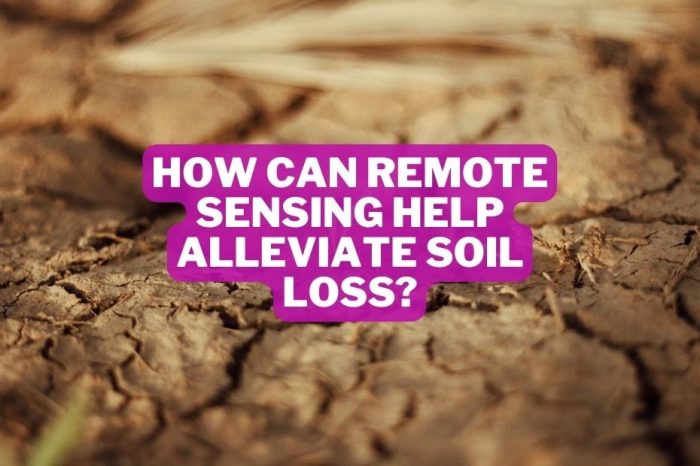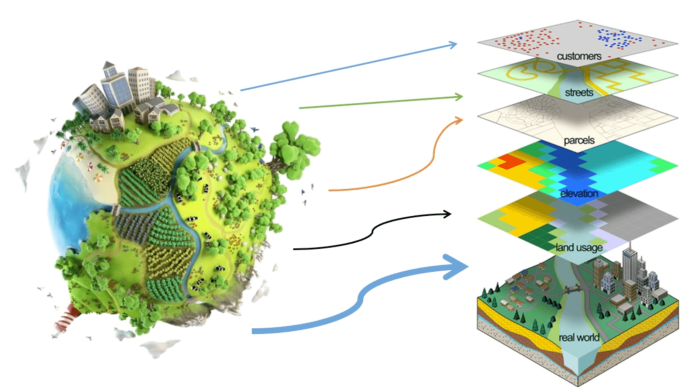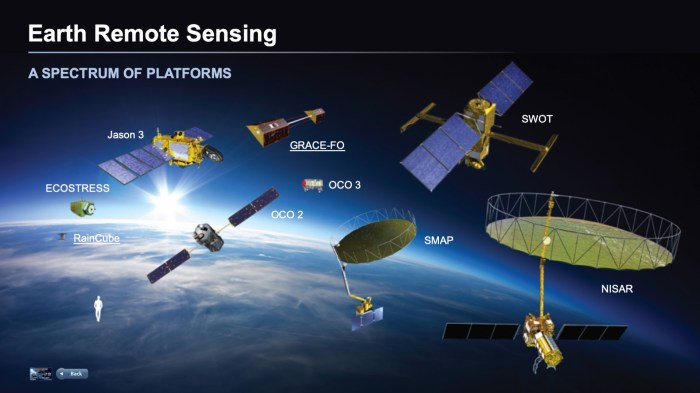As how can remote sensing help alleviate soil loss takes center stage, this opening passage beckons readers into a world crafted with authoritative knowledge, ensuring a reading experience that is both absorbing and distinctly original.
Soil loss, a pressing environmental concern, poses significant threats to global food security and ecosystem health. Remote sensing, a powerful technology that gathers data from a distance, emerges as a game-changer in combating soil loss, offering innovative solutions for monitoring, modeling, and conservation planning.
Remote Sensing for Soil Loss Alleviation

Remote sensing, the acquisition of information about Earth’s surface from a distance, plays a crucial role in addressing soil loss, a significant environmental issue that degrades soil quality and threatens food security.
Soil loss is a complex process influenced by factors such as rainfall, topography, soil type, and land use. Remote sensing techniques provide valuable data for understanding these factors and developing effective soil conservation strategies.
Remote Sensing Techniques for Soil Loss Monitoring, How can remote sensing help alleviate soil loss
Remote sensing platforms, including satellites and drones, collect data in various spectral bands, enabling the detection and analysis of soil properties and erosion patterns.
Satellite-based sensors, such as Landsat and Sentinel, provide multispectral and hyperspectral imagery with high spatial and temporal resolutions. Drones offer flexibility and high-resolution imagery for detailed assessments of smaller areas.
Applications of Remote Sensing in Soil Loss Assessment
- Identifying erosion-prone areas: Remote sensing data helps identify areas susceptible to erosion based on factors such as slope, soil texture, and land cover.
- Quantifying soil erosion rates: Remote sensing techniques, such as the Revised Universal Soil Loss Equation (RUSLE), estimate soil erosion rates by integrating data on rainfall, soil erodibility, slope, and land cover.
- Monitoring the effectiveness of soil conservation practices: Remote sensing can track changes in land cover and soil properties over time, evaluating the effectiveness of conservation measures such as terracing and contour farming.
- Identifying critical areas for conservation: Remote sensing data helps identify areas with high erosion risk, allowing for targeted conservation efforts.
- Designing and implementing erosion control measures: Remote sensing can guide the design of terraces, contour farming systems, and other erosion control measures based on site-specific conditions.
- Monitoring the effectiveness of conservation practices: Remote sensing can track changes in land cover and soil properties over time, evaluating the effectiveness of conservation practices and identifying areas where additional measures are needed.
- Data availability: Access to high-quality, timely remote sensing data can be limited, especially in developing regions.
- Data processing: Processing and analyzing large volumes of remote sensing data requires specialized expertise and computational resources.
- Model accuracy: Soil loss models based on remote sensing data can have limitations in accuracy, particularly in areas with complex terrain or vegetation cover.
- Developing new sensors and platforms for improved data collection.
- Advancing data processing techniques to extract more accurate information from remote sensing data.
- Improving the accuracy and applicability of soil loss models by incorporating additional data sources and refining model algorithms.
Remote Sensing for Soil Loss Modeling
Remote sensing data is essential for developing soil loss models that simulate erosion processes and predict erosion rates under different scenarios.
Models such as RUSLE and the Soil and Water Assessment Tool (SWAT) incorporate remote sensing data to estimate erosion rates, prioritize conservation efforts, and assess the impact of land use changes on soil loss.
Remote Sensing for Soil Conservation Planning
Remote sensing supports soil conservation planning by providing information for:
Challenges and Future Directions
While remote sensing offers significant potential for soil loss assessment and management, challenges remain:
Future research directions include:
Q&A: How Can Remote Sensing Help Alleviate Soil Loss
What is the significance of remote sensing in soil loss assessment?
Remote sensing provides timely and accurate data over large areas, enabling comprehensive monitoring of soil erosion and identification of vulnerable regions.
How does remote sensing aid in soil conservation planning?
Remote sensing data helps identify critical areas for conservation, design erosion control measures, and monitor their effectiveness, ensuring targeted and efficient soil conservation efforts.
What are the challenges associated with using remote sensing for soil loss assessment?
Challenges include atmospheric interference, cloud cover, and the need for ground-truthing data for accurate interpretation of remote sensing images.

